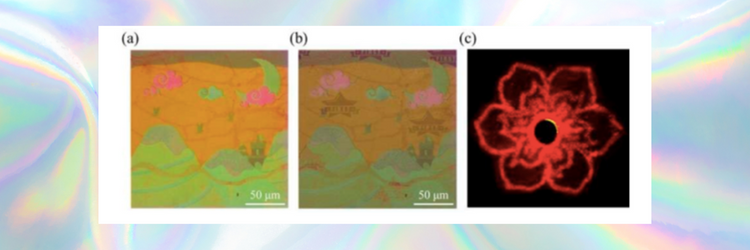Metasurface Creates Three Images Based on Illumination
Researchers created a metasurface device that can display three types of images depending on illumination. They envision that the three-channel device can be instrumental as an anti-counterfeiting measure or in delivering encrypted information securely.
Published in the Optica Publishing Group journal Optics Express, they showed that the metasurface would generate a holographic image or a structural-color nanoprinting image with or without polarization-dependent watermarks.
The researchers merged watermarked structural-color nanoprinting with holographic imaging into a device made of tiny nanobricks arranged on a transparent substrate. By carefully engineering the sizes and orientations of the nanobricks, they developed a way to create structural-color images that appear on the surface of the device as well as a holographic image that appears in the far field. Researchers readily observed the unwatermarked structural-color nanoprinting image under natural light illumination. They could also decode the same image with a watermark pattern with an optical polarizer. Finally, researchers could only view the holographic image in the third channel under coherent laser light.
The team fabricated a sample using standard electron beam lithography to demonstrate the new metasurface device. They observed the watermarked and unwatermarked nanoprinting images using an optical microscope while visualizing the holographic images using an optical path consisting of a continuum laser, iris, lens, the sample, and an optical screen.
The researchers plan to combine their new multi-functional metasurfaces with other materials, such as liquid crystal and black phosphorus, to achieve dynamic and more versatile light control. They also want to explore how metasurfaces could be used for optical computing and biomedical sensing and are working on ways to mass-produce the new material.

